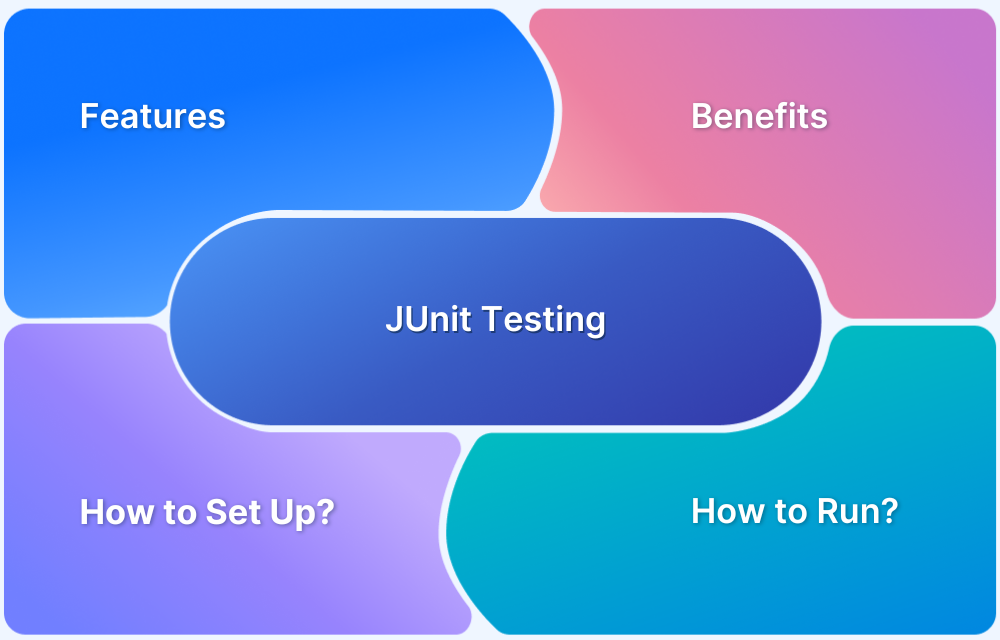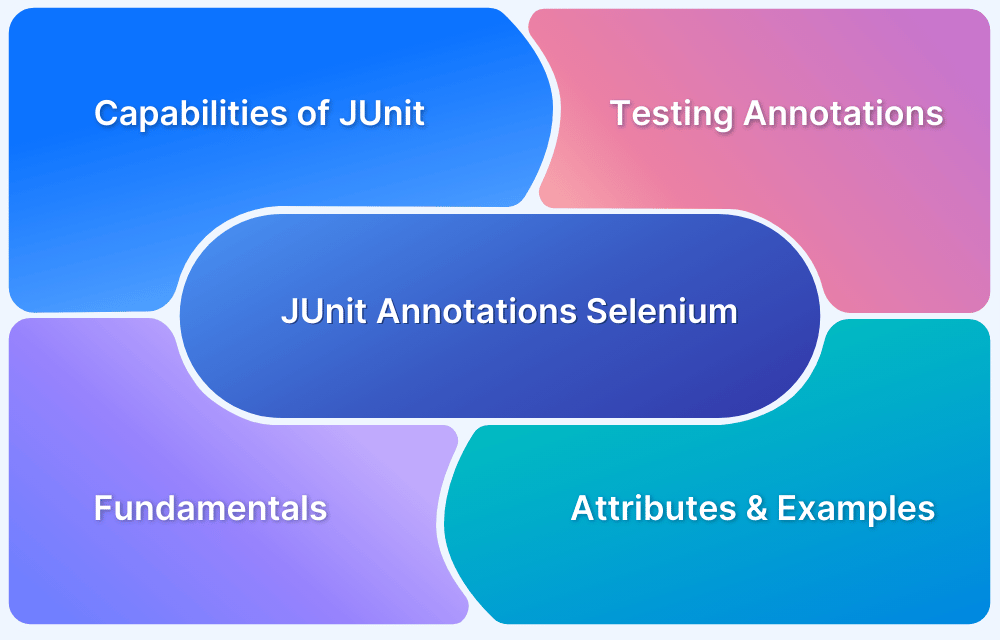Unit testing is crucial in the Software Development Lifecycle to ensure individual code components work as expected. JUnit (for Java) and NUnit (for .NET) are popular testing frameworks that offer annotations to initialize data, manage objects, and execute tests efficiently.
Overview
JUnit is a widely used unit testing framework for Java applications, providing annotations and assertions to ensure code correctness.
NUnit is another popular unit testing framework for .NET applications, offering flexible test cases, attributes, and advanced reporting.
JUnit vs NUnit: Key Comparison
- Language Support: JUnit is tailored for Java, while NUnit is built for .NET languages like C#, VB.NET, and F#.
- Test Attributes: JUnit uses annotations (e.g., @Test, @Before), whereas NUnit uses attributes (e.g., [Test], [SetUp]).
- IDE & Tool Integration: JUnit integrates seamlessly with Eclipse, IntelliJ, and build tools like Maven/Gradle; NUnit works smoothly with Visual Studio and tools like MSBuild.
- Assertions & Flexibility: Both offer strong assertion libraries, but NUnit provides more extensive options like parameterized tests and constraints.
- Community & Ecosystem: JUnit has a larger ecosystem in Java projects, while NUnit is the go-to choice in .NET development environments.
This article discusses two popular Unit Testing Frameworks available for Java and for .Net and compares them.
What is JUnit Framework?
JUnit is a Unit Testing Framework for Java. JUnit was initially developed for the purpose of testing source code and evolved to be one of the main Unit Testing tools for Web, API, and DataBase testing (Using libraries like Selenium, RestAssured, etc.)
JUnit can be used by either adding
- JUnit JAR to the Project Library
- JUnit Maven Dependency
The below code, the example shows how to quickly run a Selenium test using JUnit Annotations
import java.io.File;
import org.openqa.selenium.WebDriver;
import org.openqa.selenium.chrome.ChromeDriver;
import org.JUnit.After;
import org.JUnit.Before;
import org.JUnit.Test;
public class SeleniumTestngTest {
WebDriver driver;
@Before
public void initDriver() {
String path = System.getProperty("user.dir") + File.separator + "driver" + File.separator
+ "chromedriver-2";
System.setProperty("webdriver.chrome.driver", path);
WebDriver driver=new ChromeDriver();
driver.manage().window().maximize();
}
@Test
public void firstTest () {
driver.get("https://www.bstackdemo.com/");
}
@After
public void tearDown() {
driver.close();
driver.quit();
}
What is NUnit Framework?
NUnit is a unit testing tool ported initially from JUnit for .Net Framework and is completely an Open Source Project. NUnit was released in the early 2000s, and though the initial NUnit was ported from JUnit, the recent .Net version 3 is completely rewritten from scratch.
To run the NUnit test we need to add attributes to our methods. An example, the attribute [Test], which indicates the Test method. The Attributes in NUnit are similar to JUnit/TestNG Annotations.
Below are the Nuget Packages required by NUnit
- NUnit
- NUnit3TestAdapter
- Microsoft.NET.Test.Sdk
Below code, an example shows how to run Selenium test using NUnit
using System;
using OpenQA.Selenium;
using OpenQA.Selenium.Remote;
using OpenQA.Selenium.Support.UI;
using NUnit.Framework;
using System.Collections.Generic;
using OpenQA.Selenium.Chrome;
namespace SingleTest
{
[TestFixture]
public class AttributeTest
{
IWebDriver driver;
[OneTimeSetUp]
public void oneTimeSetup()
{
Dictionary<string, object> browserStackOptions = new Dictionary<string, object>();
browserStackOptions.Add("userName", "gurudattanaap_jG");
browserStackOptions.Add("accessKey", "9yV8DdY2CwNizFW");
ChromeOptions options = new ChromeOptions();
options.AddAdditionalOption("bstack:options", browserStackOptions);
driver = new RemoteWebDriver(new Uri("https://hub-cloud.browserstack.com/wd/hub/"), options);
}
[SetUp]
public void setup()
{
driver.Manage().Window.Maximize();
driver.Url = "https://bstackdemo.com/";
}
[Test]
public void test1()
{
DefaultWait<IWebDriver> fluentWait = new DefaultWait<IWebDriver>(driver);
fluentWait.Timeout = TimeSpan.FromSeconds(5);
fluentWait.PollingInterval = TimeSpan.FromMilliseconds(250);
fluentWait.Until(mydriver => mydriver.Title == "StackDemo");
}
[Test]
public void test2()
{
DefaultWait<IWebDriver> fluentWait = new DefaultWait<IWebDriver>(driver);
fluentWait.Timeout = TimeSpan.FromSeconds(5);
fluentWait.PollingInterval = TimeSpan.FromMilliseconds(250);
fluentWait.Until(mydriver => mydriver.Title == "StackDemo1");
}
}
}
JUnit Vs NUnit: Feature Differences
As both the frameworks are very similar in nature, we are comparing them based on different annotations and attributes used by each framework.
| Criteria | NUnit | JUnit |
|---|---|---|
| Programming Language | .Net | Java |
| Test Declaration | [Test] | @Test |
| Grouping Tests by Class | [TestFixture] | @BeforeClass@AfterClass |
| Setup and Teardown | [Setup] [TearDown] | @Before @After |
| One-time setup/ teardown before all tests execution | [OneTimeSetUp] [OneTimeTearDown] | @BeforeClass@AfterClass |
| Skip a test | [Ignore(“reason”)] | @Ignore |
| Group test by Category | [Category()] | @Category |
| Test Data setup/Cleanup before executing test | [TestFixtureSetup] [TestFixtureTearDown] | @BeforeClass @Before @AfterClass @After |
| Execution in Isolation | Configurable | @Isolated |
Conclusion
JUnit is a very popular Unit testing framework for Java and NUnit, which is ported from JUnit and has become a popular Unit testing framework in the .Net world. Both provide the ability for developers and testers to write Unit, Integration, and End to End testing using popular libraries like Selenium, RESTAssured, etc.
However, no matter which Unit Testing framework you choose, it is important to test the application on a real device cloud for more accurate test results. By testing under real user conditions you can identify the bottlenecks in the real user experience and rectify them in time before release.







